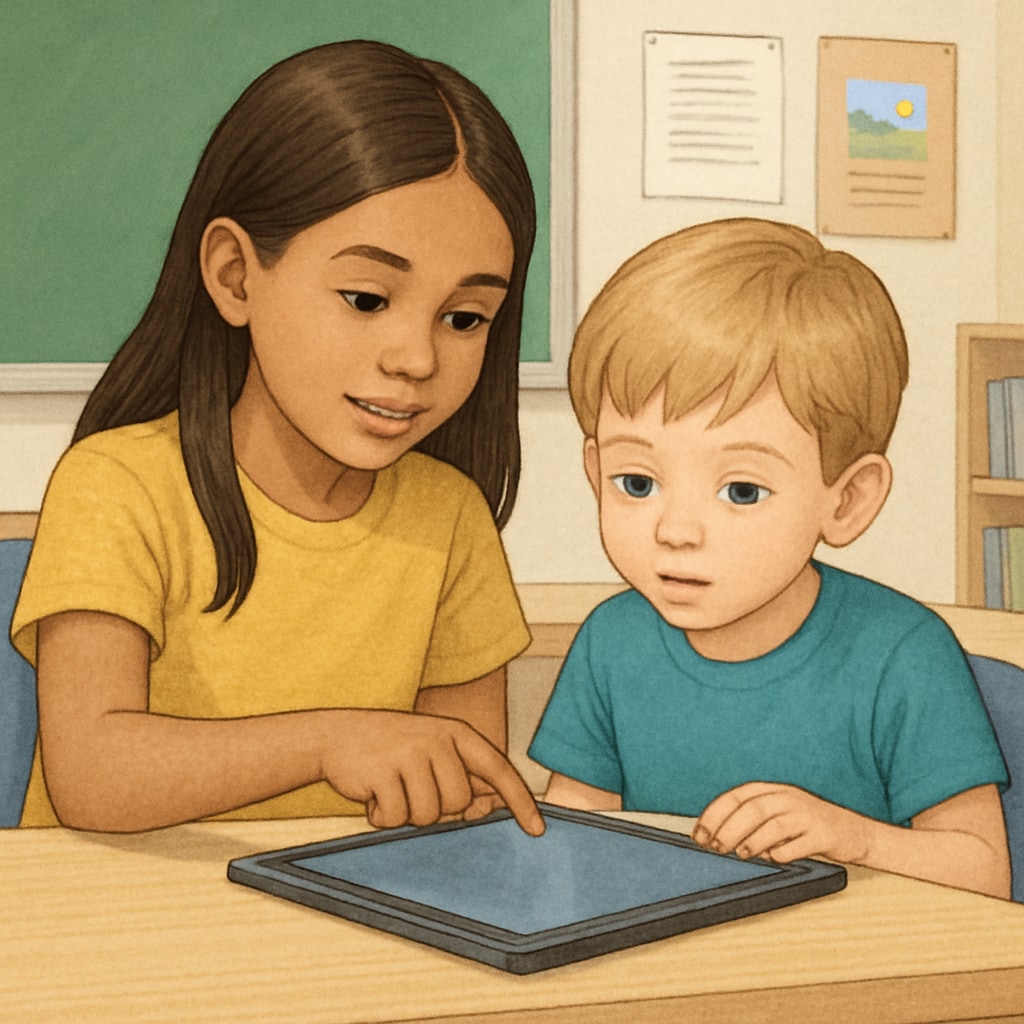Pairing kindergarteners with fourth graders in a cross-age partnership program, particularly for computer-based activities, offers a unique opportunity for both age groups to learn and grow. Fourth graders can develop leadership and mentoring skills, while kindergarteners gain early exposure to technology in a supportive, hands-on environment. This article outlines creative digital activities tailored to accommodate differing literacy levels, ensuring a positive and enriching experience for all participants.
Why Cross-Age Learning Works
Cross-age learning programs leverage the natural curiosity of younger students and the growing independence of older ones. For kindergarteners, interacting with fourth graders can feel exciting and aspirational. Meanwhile, fourth graders benefit from the responsibility of guiding their younger peers, reinforcing their own knowledge in the process.
Technology-based activities provide an excellent platform for this partnership. Through carefully chosen tasks, both groups can engage in meaningful collaboration, regardless of their literacy levels or prior experience with computers.
Engaging Digital Activities for Kindergarteners and Fourth Graders
Here are some practical and fun computer-based activities that can be introduced in a kindergarten and fourth-grade partnership program:
- Interactive Story Creation: Use simple storytelling platforms like StoryJumper. Fourth graders can help type or guide the story structure, while kindergarteners contribute ideas, character names, and drawings. The final product can be printed or shared digitally with families.
- Basic Coding Games: Platforms like ScratchJr are perfect for introducing coding concepts. Fourth graders can explain how to drag and drop code blocks, while kindergarteners experiment with creating simple animations.
- Digital Art Projects: Programs such as Tux Paint allow students to design collaborative art. Fourth graders can navigate the tools, and kindergarteners can add creative touches, like shapes or colors.
- Virtual Field Trips: Explore museums or zoos through virtual tours. Fourth graders can read instructions and guide the navigation, while kindergarteners share observations about what they see.
- Educational Games: Websites like PBS Kids offer age-appropriate games that both groups can enjoy. Fourth graders can explain game mechanics, ensuring kindergarteners stay engaged and on task.

Tips for Facilitating Successful Partnerships
To ensure the success of these activities, educators and facilitators should consider the following tips:
- Set Clear Goals: Define what each activity aims to achieve, such as improving creativity, teamwork, or digital literacy.
- Provide Training for Fourth Graders: Teach older students how to be patient mentors and offer support without dominating the project.
- Choose Age-Appropriate Tools: Ensure the software and platforms used are simple enough for kindergarteners but still engaging for fourth graders.
- Encourage Reflection: After completing an activity, have both age groups discuss what they learned and enjoyed most.
- Celebrate Achievements: Share completed projects with the school community or parents to boost confidence and pride in both groups.

The Long-Term Benefits of Cross-Age Technology Programs
By participating in cross-age technology programs, students gain more than just computer skills. Kindergarteners develop confidence, problem-solving abilities, and early tech familiarity, which can set a foundation for future learning. Fourth graders, on the other hand, enhance their communication, empathy, and leadership skills—qualities that are valuable both in and out of the classroom.
In addition, these programs foster a sense of community within schools. Younger students feel supported by their older peers, and fourth graders learn the importance of being role models. These bonds can help create a more inclusive, connected school environment.
As a result, cross-age learning initiatives that incorporate computer activities are not only engaging but also transformative. They prepare students for a world that increasingly relies on digital collaboration and lifelong learning.
Readability guidance: This article maintains a balance of short and medium-length sentences, incorporates transition words for smooth reading, and uses active voice for clarity. Bullet points are used for concise idea presentation, ensuring the content is easy to digest for a broad audience.


